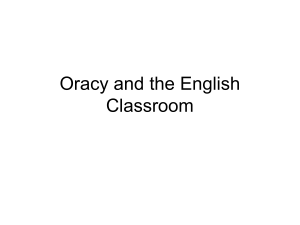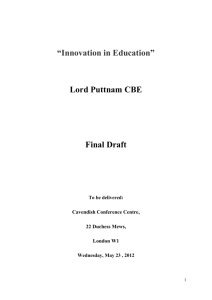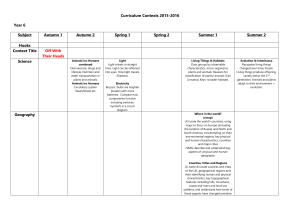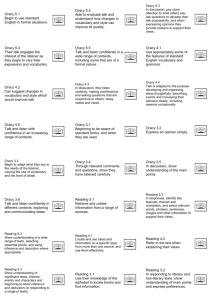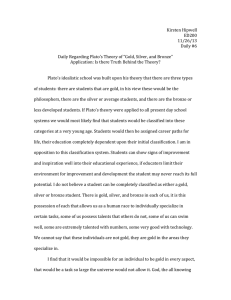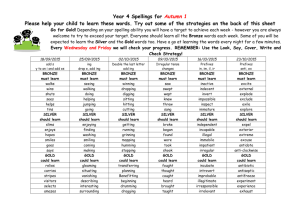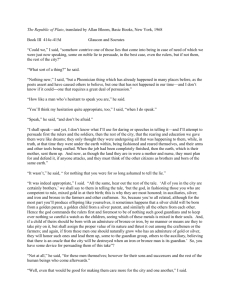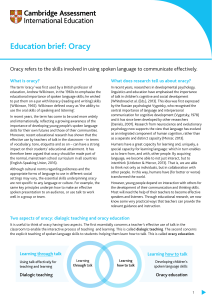Assessing Oracy throughout Year 7 Oracy Skill
advertisement
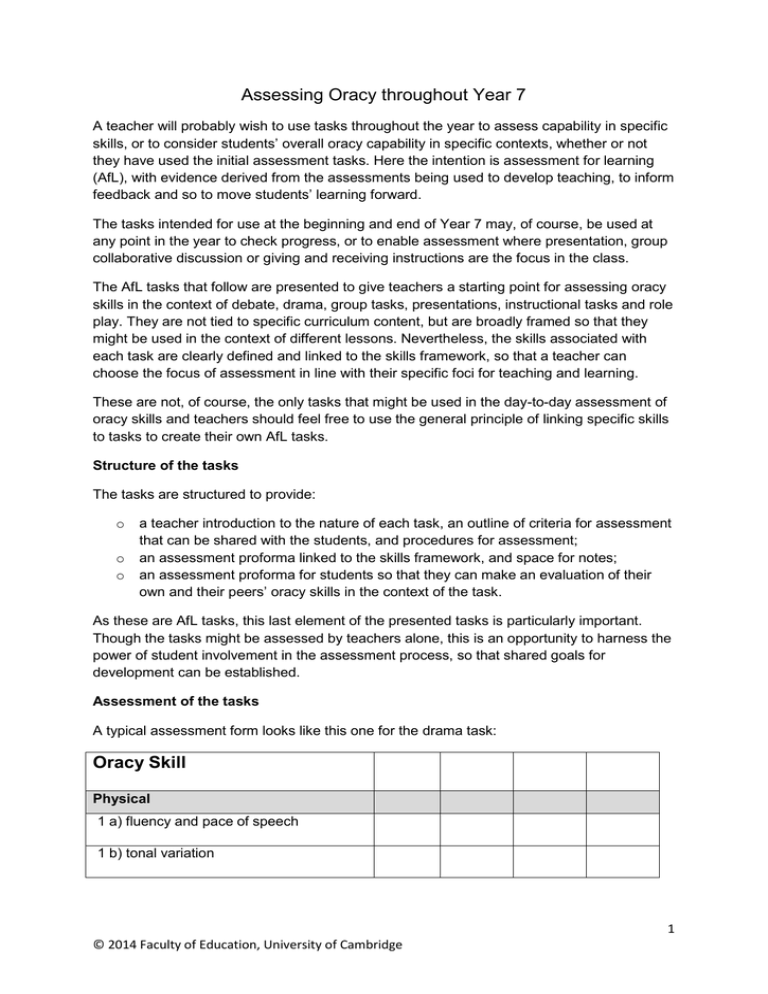
Assessing Oracy throughout Year 7 A teacher will probably wish to use tasks throughout the year to assess capability in specific skills, or to consider students’ overall oracy capability in specific contexts, whether or not they have used the initial assessment tasks. Here the intention is assessment for learning (AfL), with evidence derived from the assessments being used to develop teaching, to inform feedback and so to move students’ learning forward. The tasks intended for use at the beginning and end of Year 7 may, of course, be used at any point in the year to check progress, or to enable assessment where presentation, group collaborative discussion or giving and receiving instructions are the focus in the class. The AfL tasks that follow are presented to give teachers a starting point for assessing oracy skills in the context of debate, drama, group tasks, presentations, instructional tasks and role play. They are not tied to specific curriculum content, but are broadly framed so that they might be used in the context of different lessons. Nevertheless, the skills associated with each task are clearly defined and linked to the skills framework, so that a teacher can choose the focus of assessment in line with their specific foci for teaching and learning. These are not, of course, the only tasks that might be used in the day-to-day assessment of oracy skills and teachers should feel free to use the general principle of linking specific skills to tasks to create their own AfL tasks. Structure of the tasks The tasks are structured to provide: o o o a teacher introduction to the nature of each task, an outline of criteria for assessment that can be shared with the students, and procedures for assessment; an assessment proforma linked to the skills framework, and space for notes; an assessment proforma for students so that they can make an evaluation of their own and their peers’ oracy skills in the context of the task. As these are AfL tasks, this last element of the presented tasks is particularly important. Though the tasks might be assessed by teachers alone, this is an opportunity to harness the power of student involvement in the assessment process, so that shared goals for development can be established. Assessment of the tasks A typical assessment form looks like this one for the drama task: Oracy Skill Physical 1 a) fluency and pace of speech 1 b) tonal variation 1 © 2014 Faculty of Education, University of Cambridge 1 d) voice projection 2 a) gesture and posture 2 b) facial expression and eye contact Linguistic 6 rhetorical techniques, such as metaphor, humour, irony and mimicry Cognitive 11 taking account of the level of understanding of the audience Social & Emotional 14 a) self-assurance 14 b) liveliness and flair Overall assessment In using the forms, the intention is to find out how the students are performing in relation to the specific skills identified for each task. This should be done using a simple Gold, Silver and Bronze system, where: GOLD means ‘consistently demonstrates this skill’. SILVER means ‘demonstrates this skill some of the time’. BRONZE means ‘rarely or never demonstrates this skill yet’. Teachers have adopted a variety of approaches to completing these sheets and there is no ‘correct way’. Some teachers have given a rating for each skill as the task has been carried out, later providing an overall oracy rating for the student after considering their individual skills ratings. Other teachers have made much greater use of the notes sections during the task, given an overall oracy rating at the end, and retrospectively considered which skills were evidenced, and to what extent, by individual students during the task. The point is that the information should be useful and a formative influence on teaching. Assessing in more detail Whilst a simple Gold, Silver and Bronze assessment makes the system easy to use, some teachers have found that it does not discriminate sufficiently for their purposes. The following + and – augmentation may therefore be helpful in discriminating between students, and between their performances in the initial and end assessments: Gold Gold - Silver + Silver Silver - Bronze + Bronze 2 © 2014 Faculty of Education, University of Cambridge
